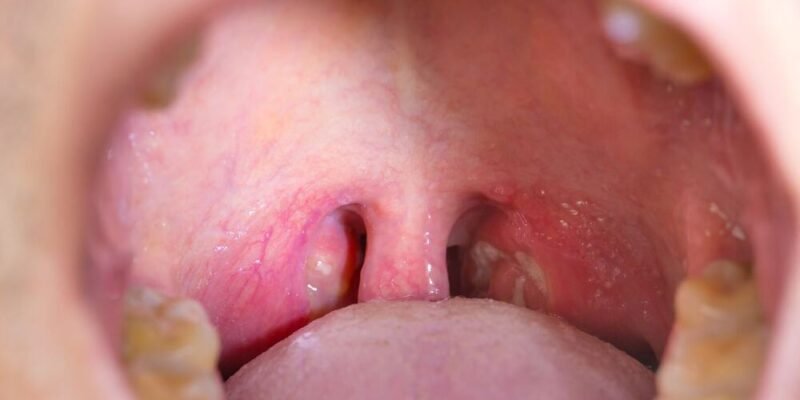Tonsillectomy, the surgical removal of the tonsils, is a standard procedure often performed to address chronic tonsillitis, sleep apnea, or other medical issues. However, a question that intrigues many is, “Can tonsils grow back after being removed? – Tymoff” This article delves into the complexities of tonsil regrowth, examining the factors that influence it, the likelihood of its occurrence, and the implications for patients who have undergone tonsillectomy.
Understanding Tonsils and Tonsillectomy
Tonsils are small, almond-shaped glands located at the back of the throat. They are part of the lymphatic system and play a crucial role in the body’s immune response by trapping and filtering bacteria and viruses that enter the mouth and nose. Despite their importance in the immune system, tonsils can become problematic when they are frequently infected or enlarged, leading to chronic tonsillitis or obstructive sleep apnea.
Tonsillectomy is the surgical procedure performed to remove the tonsils. There are two main types of tonsillectomy: extracapsular tonsillectomy, where the entire tonsil is removed, and intracapsular tonsillectomy, where a portion of the tonsil tissue is left behind. The latter method aims to reduce postoperative pain and bleeding but leaves the potential for some tonsil tissue to remain, which can lead to regrowth.
Factors Influencing Tonsil Regrowth
Age at Surgery
Age plays a significant role in the likelihood of tonsil regrowth. Tonsils tend to shrink naturally after puberty, so children undergoing tonsillectomy before this stage may experience a higher chance of regrowth. The regenerative capacity of younger individuals is generally more robust, which can contribute to the potential for any residual tonsil tissue to increase.
Surgical Technique
The surgical technique used during the tonsillectomy also affects the likelihood of regrowth. Extracapsular tonsillectomy, which aims to remove all tonsil tissue, minimizes the risk of regrowth. In contrast, intracapsular tonsillectomy leaves a thin layer of tonsil tissue, increasing the possibility of remaining cells regenerating over time. The precision and thoroughness of the surgeon can also influence outcomes.
Individual Healing Processes
Each person’s healing process is unique, and individual variations in how the body repairs and regenerates tissue can impact whether tonsils regrow. Genetics, overall health, and immune response play a role in this process. People with a history of allergies, frequent upper respiratory infections, or previous acute tonsillitis may have a higher risk of experiencing tonsil regrowth.
Signs and Symptoms of Tonsil Regrowth
Recognizing the signs of tonsil regrowth is crucial for prompt intervention. After a tonsillectomy, patients should be vigilant for symptoms indicating regrowth. These symptoms can include the appearance of small bumps or lumps in the throat where the tonsils were previously located, persistent throat discomfort or pain, and recurrent throat infections such as strep throat. Swollen or infected areas in the throat can also signify regrowth.
Patients who experience these symptoms should consult their healthcare provider for a thorough evaluation. Tonsil regrowth is typically diagnosed by physical examination of the throat, including inspection and palpation of the tonsil area. Imaging techniques such as ultrasound or CT scans can provide detailed insights into the extent of regrowth and help confirm the diagnosis.
Treatment Options for Tonsil Regrowth
The treatment for regrown tonsils depends on the severity of symptoms and the extent of tissue reformation. A conservative approach with watchful waiting and symptomatic relief measures may suffice for cases where regrowth is minimal and asymptomatic. These measures can include pain management strategies and throat lozenges to alleviate discomfort.
Conservative Management
Conservative management involves the use of antibiotics to treat any bacterial infections associated with the regrown tonsils. Steroids may also be prescribed to reduce inflammation and discomfort. These treatments aim to manage symptoms and prevent further complications without the need for surgical intervention.
Surgical Intervention
In cases where conservative measures fail to provide adequate relief, or if the regrowth leads to significant complications such as recurrent infections or obstructive symptoms, surgical removal of the regrown tissue may be necessary. This procedure, known as revision tonsillectomy, involves re-excising the regrown tissue to alleviate symptoms and prevent further issues. Revision tonsillectomy is often performed using techniques similar to the initial tonsillectomy procedure to remove the regrown tissue altogether.
Preventing Tonsil Regrowth
While complete prevention of tonsil regrowth may not be feasible, specific strategies can help reduce the likelihood of recurrence. It is crucial to ensure a thorough and complete removal of tonsil tissue during the initial surgery. Adhering to postoperative care guidelines provided by healthcare providers, including proper wound care, hydration, and dietary modifications, can also help minimize the risk.
Regular follow-up appointments with healthcare providers allow for ongoing monitoring and early intervention if regrowth occurs. Staying informed about the potential signs of regrowth and maintaining open communication with healthcare professionals can empower patients to advocate for their health and well-being effectively.
Conclusion
The question, “Can tonsils grow back after being removed? – Tymoff” is fascinating, highlighting the complexities of the human body’s regenerative abilities. While tonsils can regrow after a tonsillectomy, this occurrence is rare and typically involves only partial tissue regrowth. Various factors, including the age at the time of surgery, the surgical technique used, and individual healing processes, influence the likelihood of regrowth.
Recognizing the signs and symptoms of tonsil regrowth and seeking prompt medical evaluation is crucial for appropriate management. Treatment options range from conservative measures such as antibiotics and steroids to surgical intervention in more severe cases. By understanding the factors at play and staying informed, individuals who have undergone tonsillectomy can navigate the potential challenges of tonsil regrowth with confidence and support from healthcare providers.
In conclusion, while tonsillectomy is commonly perceived as a definitive solution for tonsil-related issues, the possibility of tonsil regrowth underscores the need for ongoing vigilance and care. Patients should remain proactive in monitoring their symptoms and maintaining regular follow-up appointments to ensure optimal health outcomes. As medical knowledge continues to evolve, further research into the mechanisms of tonsil regrowth and advanced treatment modalities will enhance our understanding and management of this intriguing phenomenon.
Do Read: The Correct Spelling is School Not School. Some Pe – Tymoff













